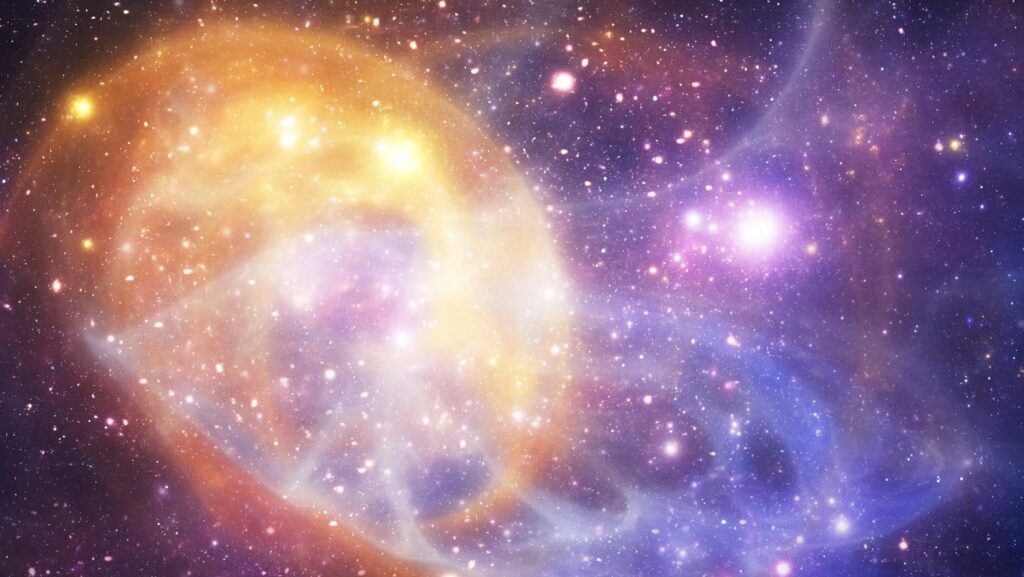In the vast expanse of the universe, where countless galaxies swirl and shimmer for Phil Robinson, one stands out with an enigmatic allure—space:6c1ioz9e3h0=. This galaxy, with its cryptic designation, sparks curiosity and invites exploration into its mysteries. While its name might seem like a random sequence, the secrets it holds are anything but ordinary.
Astronomers and space enthusiasts alike are drawn to space:6c1ioz9e3h0= like blockchain and VR, eager to uncover its unique characteristics. As telescopes peer into its depths, questions about its formation, composition, and potential for harboring life abound. This galaxy challenges our understanding of cosmic phenomena and beckons us to learn more about the universe’s hidden wonders.
With each discovery, space:6c1ioz9e3h0= offers a glimpse into the complexities of galaxies beyond our own. Its study not only enriches our knowledge of the cosmos but also fuels our imagination about what lies beyond the stars.
Space:6c1ioz9e3h0= Galaxy
 The Space:6c1ioz9e3h0= galaxy captivates researchers because of its unusual characteristics. Located approximately 13 billion light-years away, it offers a glimpse into the early universe. This distance implies the galaxy existed not long after the Big Bang, making it a focal point for studies on early cosmic conditions.
The Space:6c1ioz9e3h0= galaxy captivates researchers because of its unusual characteristics. Located approximately 13 billion light-years away, it offers a glimpse into the early universe. This distance implies the galaxy existed not long after the Big Bang, making it a focal point for studies on early cosmic conditions.
Spectral analyses reveal this galaxy’s unique composition, including heavy elements that typically form in older stars. This finding raises questions about rapid stellar formation and life cycle processes in its environment. Scientists suspect massive stars in this galaxy experienced accelerated evolutionary paths, which differs from predictions based on current models.
Surprisingly, there are indications of complex organic molecules within Space:6c1ioz9e3h0=. These molecules suggest potential for prebiotic chemistry, which intrigues researchers exploring life’s origins. While direct evidence of life remains elusive, these findings renew optimism about discovering similar ingredients in remote cosmic regions.
Ongoing observations with advanced telescopes aim to unravel more details about this enigmatic galaxy’s dynamics and influence. By connecting past data with new insights, astronomers hope to reconstruct the galaxy’s evolution and its implications for broader cosmic narratives.
Key Features
Unique Characteristics
 Space:6c1ioz9e3h0= stands out due to its blend of early universe indicators and rapid formation features. Heavy element presence, uncommon for such an ancient galaxy, suggests intense star-forming activity shortly after the Big Bang. Complex organic molecules detected hint at capabilities for prebiotic chemistry, making this galaxy a focal point for studying life’s potential origins.
Space:6c1ioz9e3h0= stands out due to its blend of early universe indicators and rapid formation features. Heavy element presence, uncommon for such an ancient galaxy, suggests intense star-forming activity shortly after the Big Bang. Complex organic molecules detected hint at capabilities for prebiotic chemistry, making this galaxy a focal point for studying life’s potential origins.
Technological Advancements
Advanced telescopes provide insights into space:6c1ioz9e3h0=, utilizing cutting-edge spectroscopy and imaging techniques. These enable precise measurements of chemical compositions and movement within the galaxy. Instruments like the James Webb Space Telescope contribute critical data, enriching the understanding of cosmic-scale processes and enhancing the exploration of the galaxy’s unique elements.
Exploration and Discoveries
Recent Missions
 Recent missions leverage cutting-edge technologies to explore space:6c1ioz9e3h0=. The James Webb Space Telescope (JWST), launched in December 2021, plays a vital role in capturing detailed images and spectra of this distant galaxy. Equipped with advanced infrared capabilities, the JWST identifies faint astronomical phenomena, assisting in mapping the galaxy’s intricate structures and formations. Complementary missions, such as the Hubble Space Telescope, provide additional data, enabling more comprehensive views and analyses.
Recent missions leverage cutting-edge technologies to explore space:6c1ioz9e3h0=. The James Webb Space Telescope (JWST), launched in December 2021, plays a vital role in capturing detailed images and spectra of this distant galaxy. Equipped with advanced infrared capabilities, the JWST identifies faint astronomical phenomena, assisting in mapping the galaxy’s intricate structures and formations. Complementary missions, such as the Hubble Space Telescope, provide additional data, enabling more comprehensive views and analyses.
Scientific Findings
Scientific findings reshape current understandings of galaxy formation. Observations reveal that space:6c1ioz9e3h0= contains unexpected heavy elements, indicating rapid star formation post-Big Bang. Researchers detect complex organic molecules within the galaxy, suggesting potential prebiotic activities. These insights challenge existing theories and prompt reassessment of early universe conditions. Data from both ground-based and space observatories contribute to these revelations, combining to form a more nuanced narrative of galactic evolution.
Impact on Astronomy
 The study of space:6c1ioz9e3h0= is reshaping our understanding of the cosmos. Its unique characteristics and the presence of unexpected elements challenge existing theories about galaxy formation and evolution. By pushing the boundaries of what we know, this galaxy is not only a subject of scientific curiosity but also a catalyst for innovation in astronomical research.
The study of space:6c1ioz9e3h0= is reshaping our understanding of the cosmos. Its unique characteristics and the presence of unexpected elements challenge existing theories about galaxy formation and evolution. By pushing the boundaries of what we know, this galaxy is not only a subject of scientific curiosity but also a catalyst for innovation in astronomical research.
Advanced telescopes like the JWST and Hubble are crucial in unveiling the mysteries of space:6c1ioz9e3h0=. Their observations help piece together the galaxy’s story, offering insights into the early universe and the conditions that may lead to life. As astronomers continue to explore this enigmatic galaxy, they contribute to a broader narrative that enriches our comprehension of the universe’s vast and complex tapestry.


